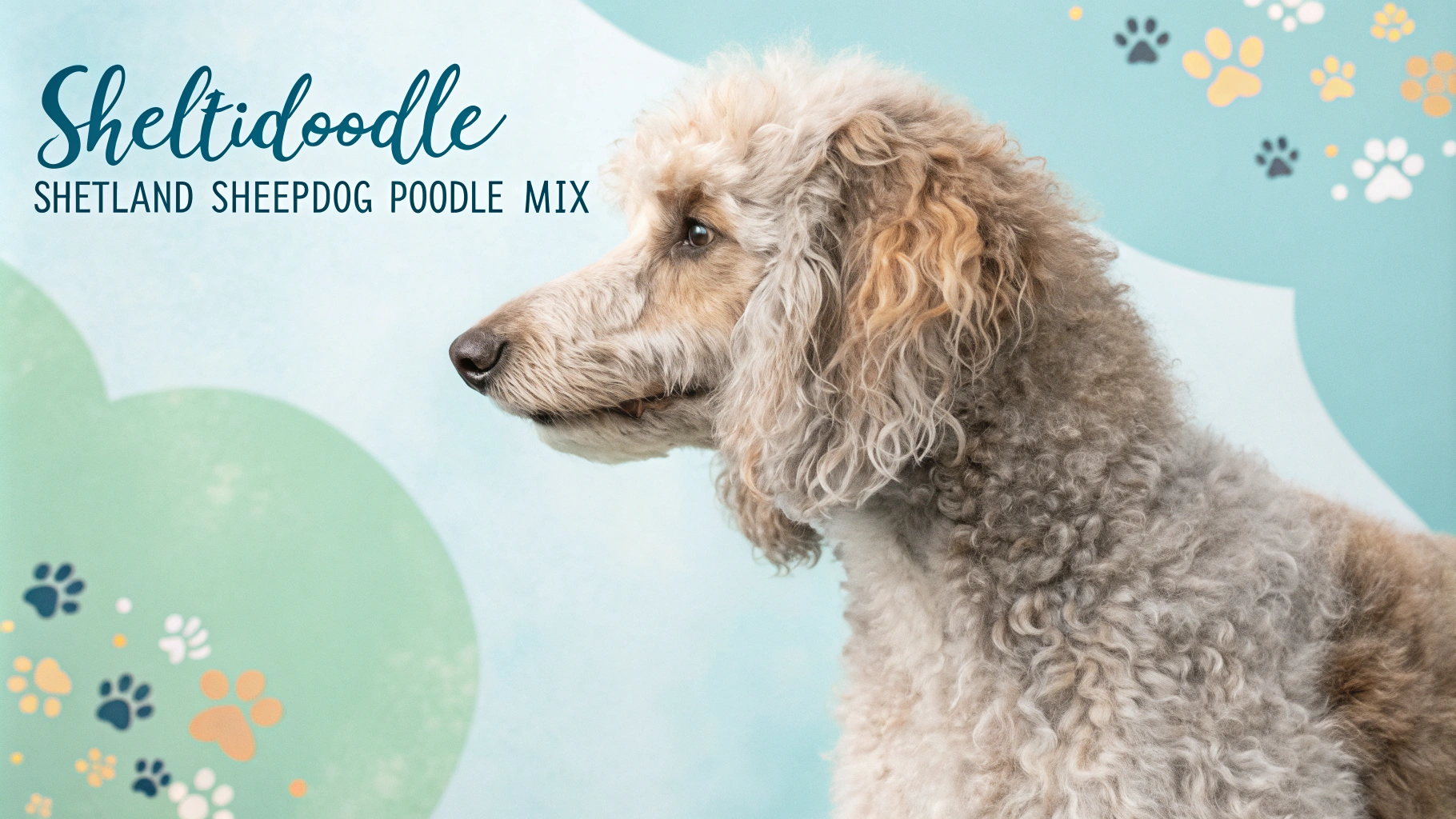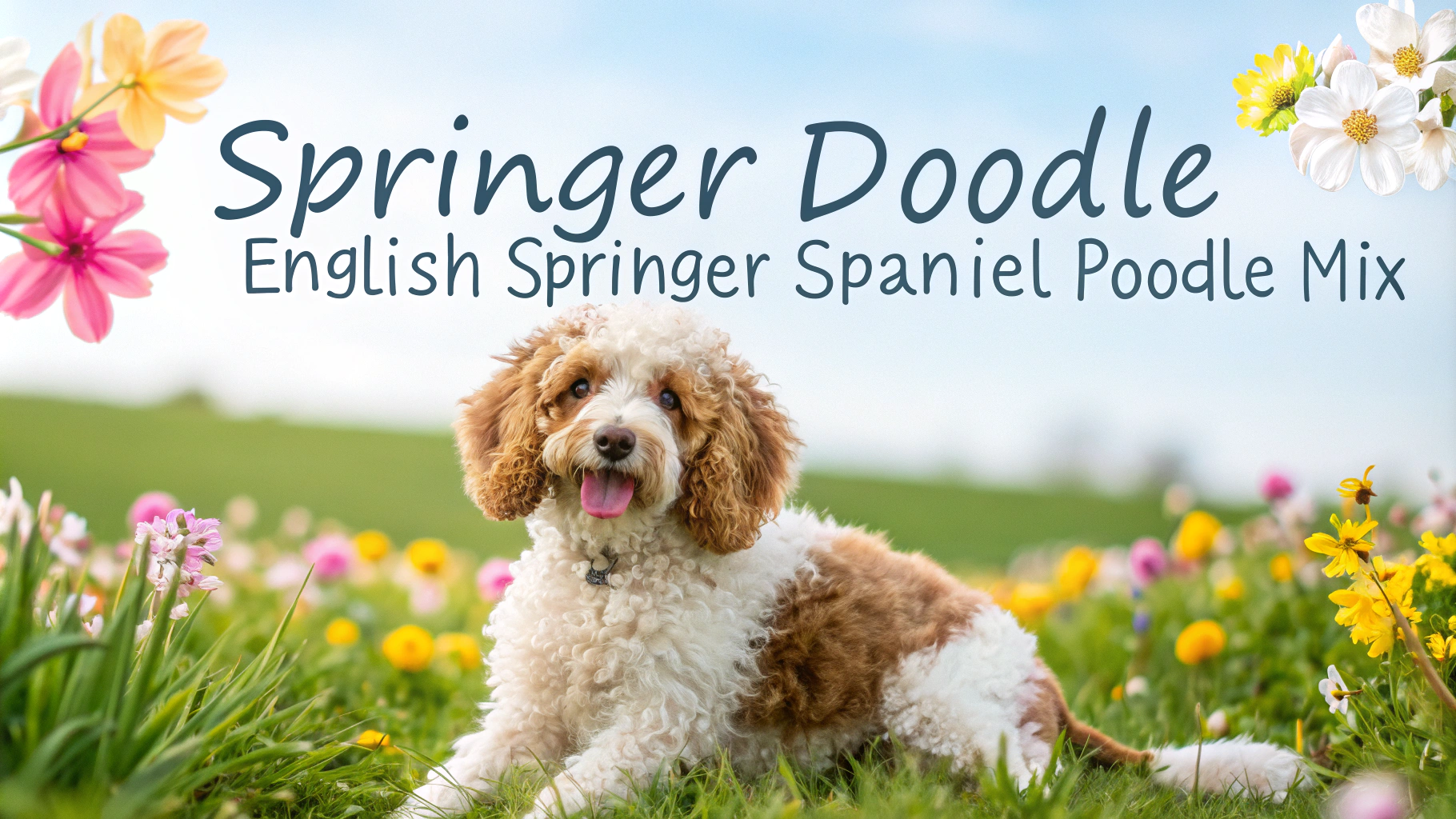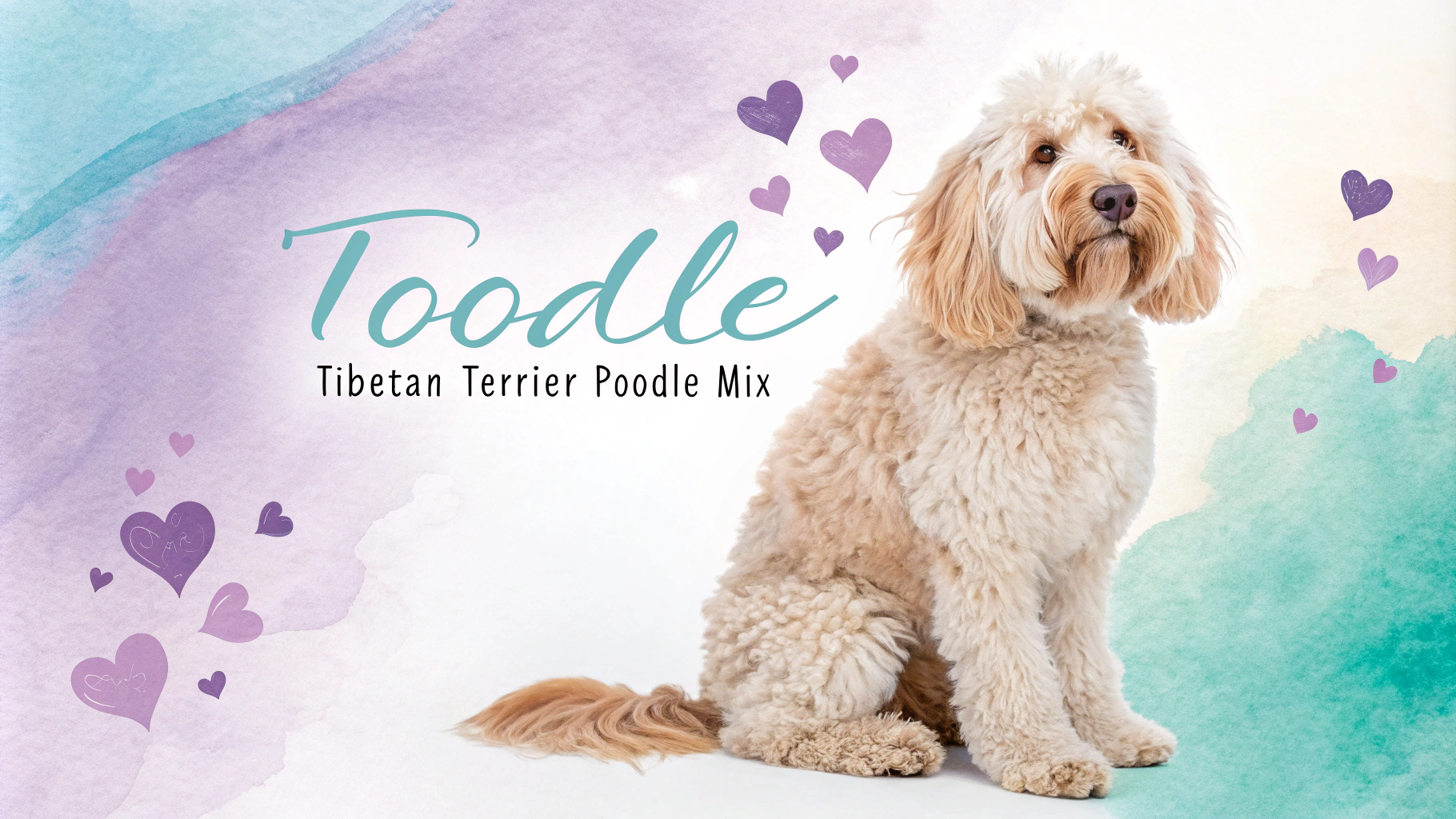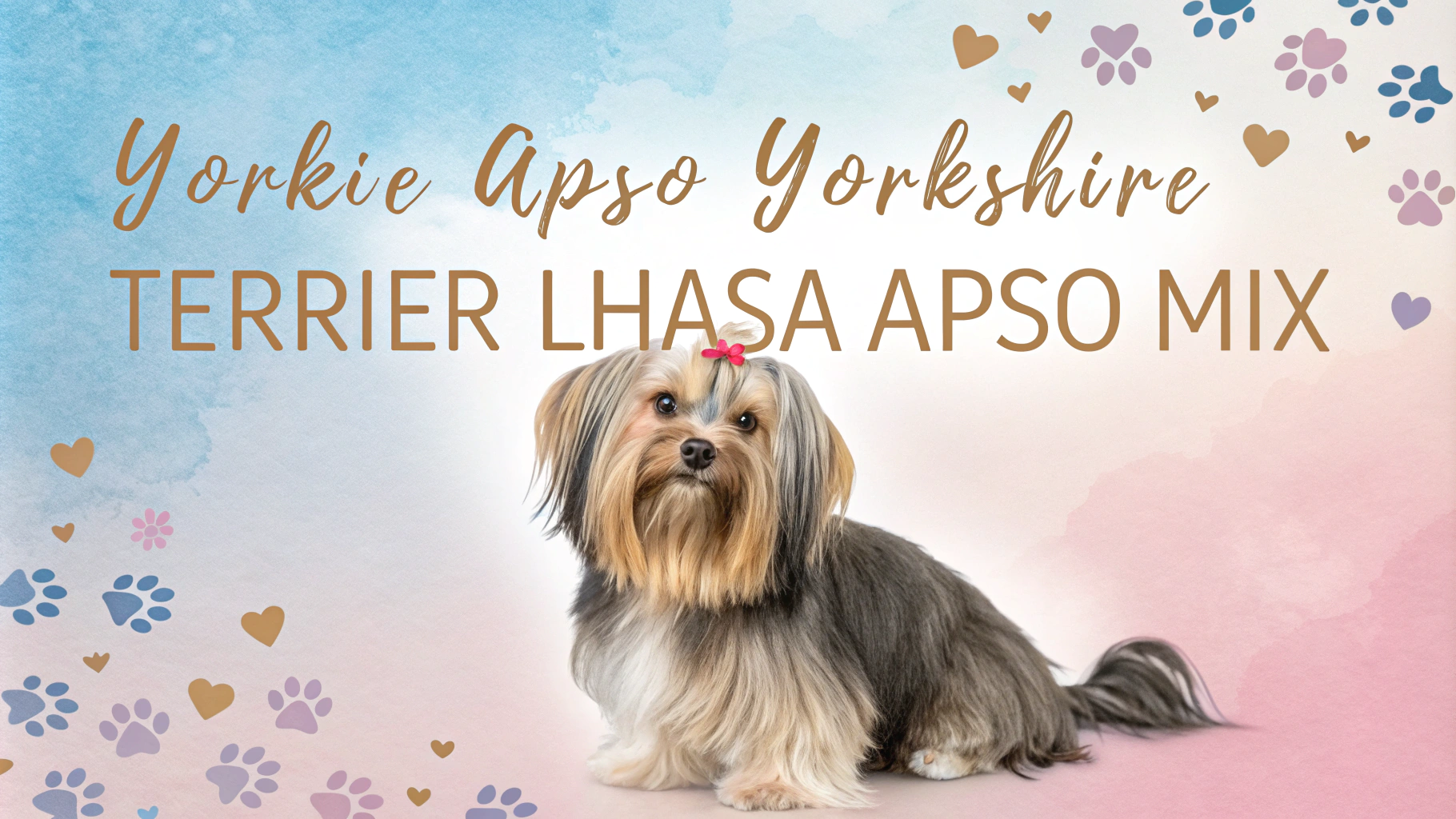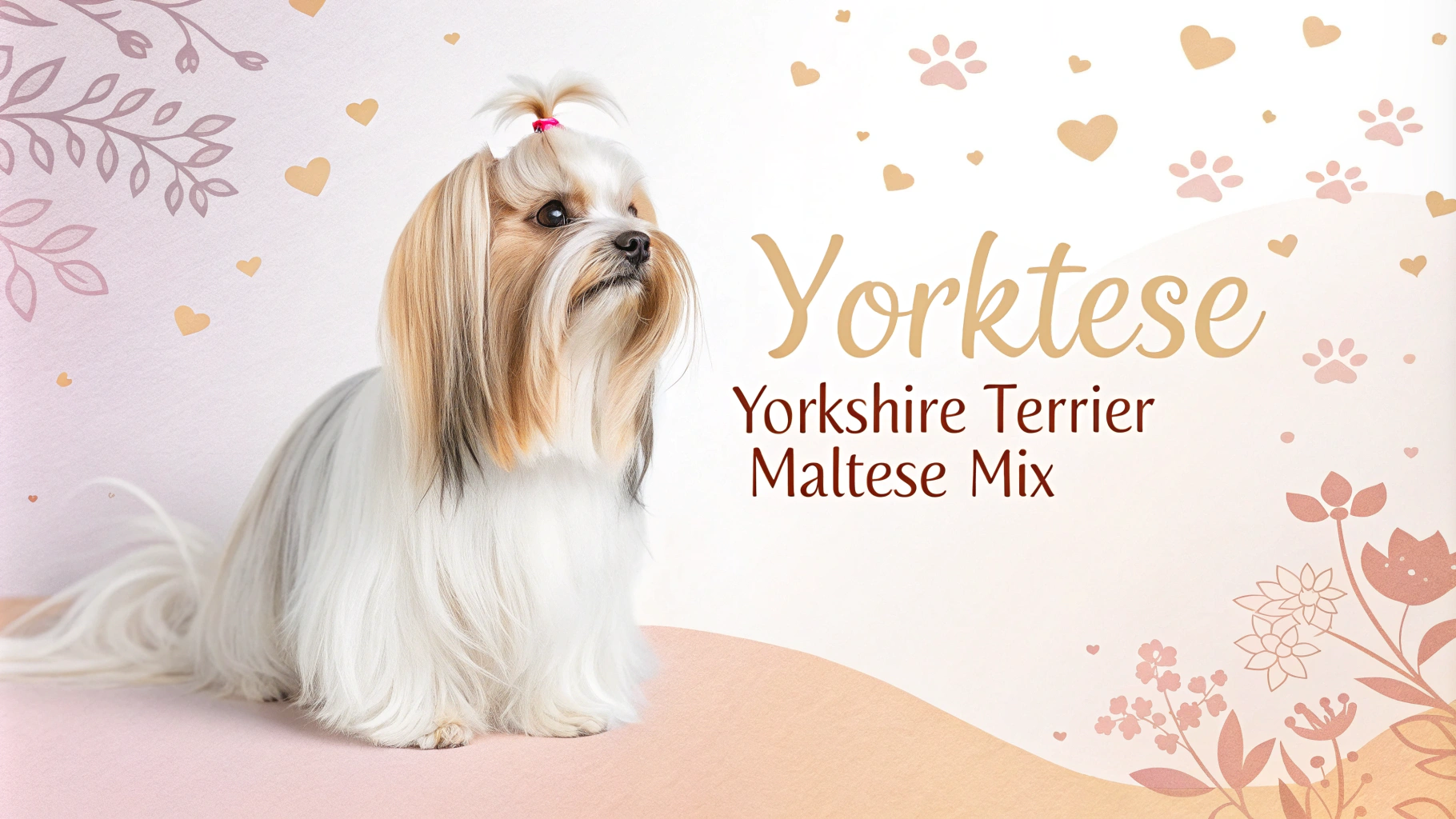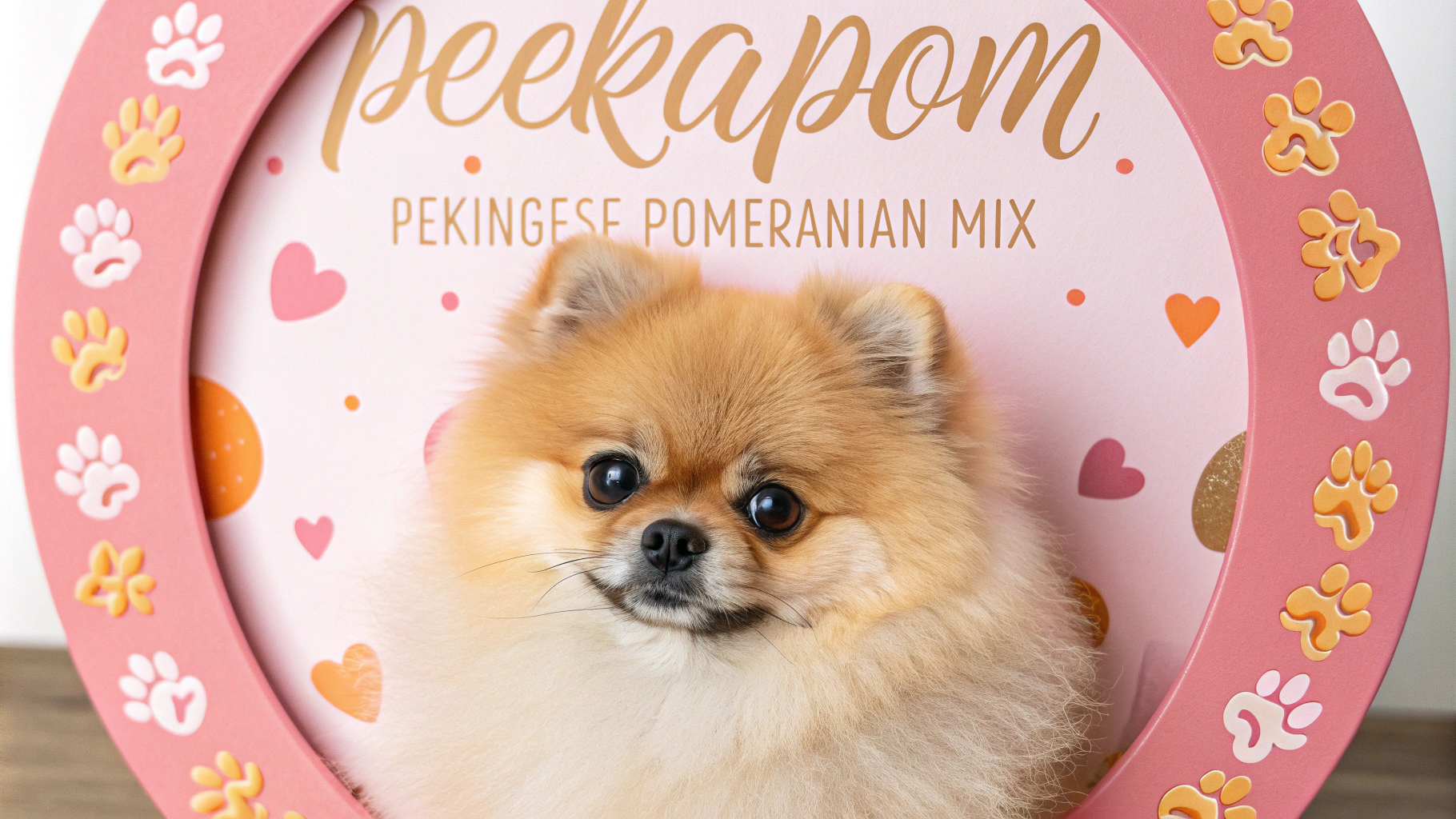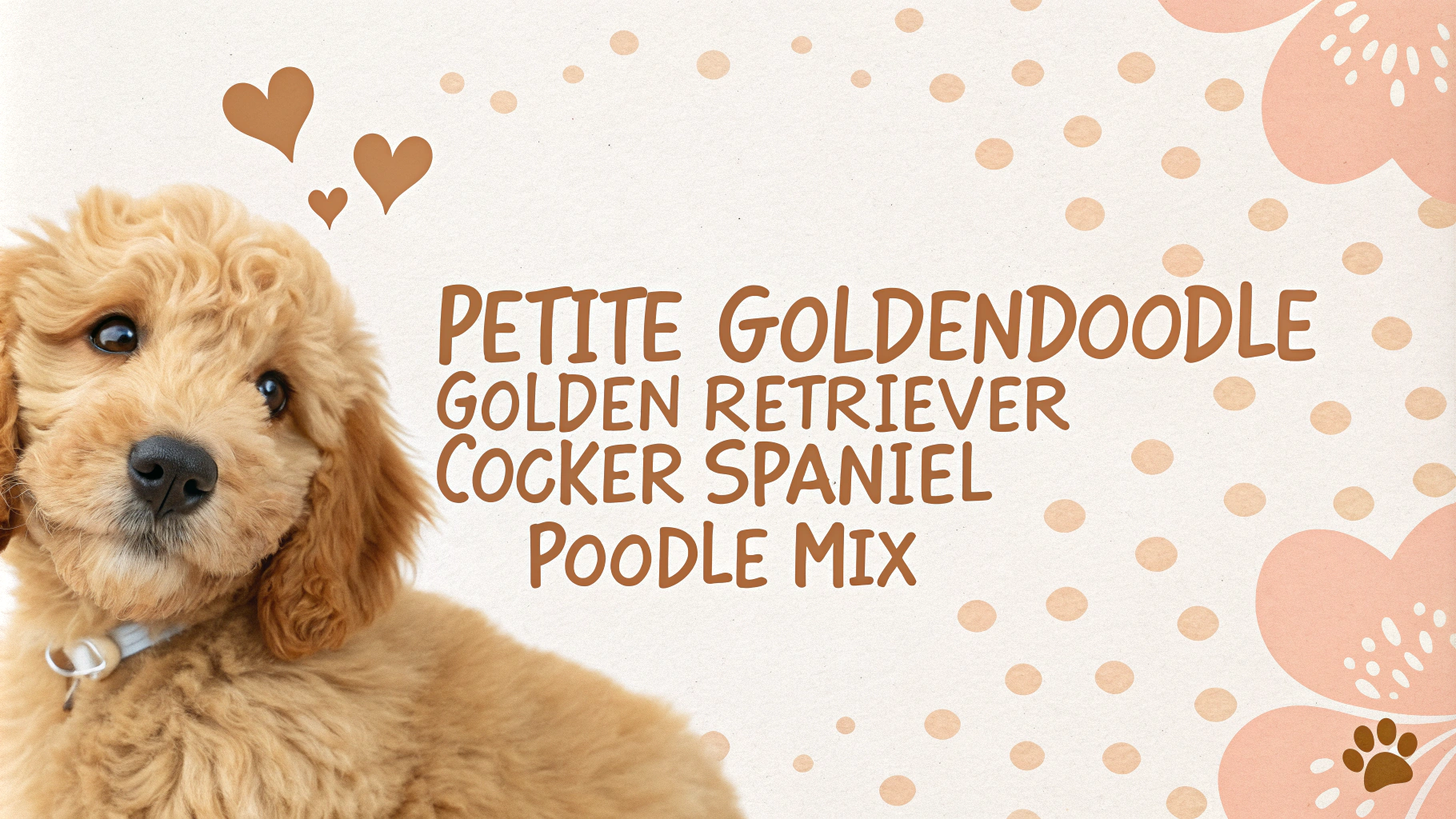The Labradoodle is a popular mixed breed dog that combines the characteristics of the Labrador Retriever and the Poodle. Known for their intelligence, friendly nature, and low-shedding coat, Labradoodles have gained popularity as family pets and service dogs. This crossbreed was initially developed to create a hypoallergenic guide dog but has since become a beloved companion for many households worldwide.
Key Facts
- Size: Medium to large, typically 21-24 inches tall
- Weight: 50-65 pounds on average
- Lifespan: 12-15 years
- Coat: Varies from wavy to curly, often low-shedding
- Colors: Wide variety, including black, chocolate, cream, and apricot
- Temperament: Friendly, intelligent, and energetic
- Good with: Families, children, other pets
- Training: Highly trainable due to intelligence and eagerness to please
Character Traits
Labradoodles are known for their friendly and outgoing personalities, combining the best traits of both parent breeds. They are typically intelligent, energetic, and affectionate dogs that form strong bonds with their families. Labradoodles are often patient and gentle with children, making them excellent family pets. Their high energy levels and playful nature mean they require regular exercise and mental stimulation. These dogs are generally sociable and get along well with other pets when properly socialized. Labradoodles are also known for their loyalty and desire to please their owners, which contributes to their success as therapy and service dogs. Their intelligence and eagerness to learn make them highly trainable, but they can also be sensitive to harsh corrections. Overall, Labradoodles are adaptable, loving companions that thrive on human interaction and require consistent attention and care.
History & Origins
The Labradoodle was first intentionally bred in Australia in 1989 by Wally Conron, who worked for the Royal Guide Dogs Association of Australia. The goal was to create a hypoallergenic guide dog for a visually impaired woman whose husband was allergic to dog hair. Conron crossed a Labrador Retriever with a Standard Poodle, resulting in the first litter of Labradoodles. While the original intent was to produce working guide dogs, the breed quickly gained popularity as a companion animal due to its friendly nature and potentially hypoallergenic coat.
Following the initial breeding, other breeders began developing Labradoodles, leading to variations in size, coat type, and appearance. The breed is not recognized by major kennel clubs as a standardized breed, which has resulted in some controversy and debate within the dog breeding community. Despite this, Labradoodles have become increasingly popular worldwide, with breeding programs focusing on developing more consistent traits and health standards. Today, there are efforts to establish the Australian Labradoodle as a distinct breed, which incorporates additional breeds like the Irish Water Spaniel and Curly Coat Retriever to enhance desirable characteristics.
Health Concerns
Labradoodles generally enjoy good health, but like all breeds, they can be prone to certain conditions. Common health issues include:
- Hip and elbow dysplasia: Inherited joint conditions that can cause pain and mobility issues
- Progressive Retinal Atrophy (PRA): A degenerative eye disorder that can lead to blindness
- Ear infections: Due to their floppy ears, which can trap moisture
- Addison’s disease: A hormonal disorder affecting the adrenal glands
Regular veterinary check-ups, genetic testing, and maintaining a healthy lifestyle can help mitigate these risks. It’s crucial to obtain a Labradoodle from a reputable breeder who conducts health screenings on their breeding dogs.
Exercise Needs
Labradoodles are energetic dogs that require substantial daily exercise to maintain their physical and mental well-being. They typically need:
- 60-90 minutes of exercise per day
- A mix of physical activities and mental stimulation
- Opportunities for running, swimming, and playing fetch
Engaging in activities like agility training, obedience work, or interactive games can help fulfill their exercise requirements. Without adequate exercise, Labradoodles may develop behavioral issues stemming from pent-up energy. Regular exercise also helps maintain a healthy weight and promotes overall longevity.
Space Requirements
Labradoodles are adaptable dogs that can thrive in various living situations, provided their exercise needs are met. Ideal living conditions include:
- A house with a securely fenced yard
- Access to outdoor spaces for play and exploration
- Sufficient indoor space for movement and rest
While Labradoodles can adapt to apartment living, it requires extra effort to ensure they receive adequate exercise and mental stimulation. Regardless of living space, these dogs should not be left alone for extended periods as they thrive on human companionship and can develop separation anxiety.
Nutrition & Feeding
Proper nutrition is crucial for maintaining the health and vitality of Labradoodles. Key considerations for their diet include:
- High-quality, age-appropriate dog food (puppy, adult, senior)
- Balanced mix of proteins, carbohydrates, and healthy fats
- Portion control to prevent obesity
- Fresh water available at all times
The amount of food should be adjusted based on the dog’s age, size, activity level, and metabolism. It’s advisable to feed adult Labradoodles twice a day and avoid free-feeding. Consult with a veterinarian to determine the best diet plan and to address any specific nutritional needs or concerns.
Grooming Tips
Labradoodles require regular grooming to maintain their coat and overall health. The frequency and intensity of grooming depend on the type of coat inherited, which can range from straight to wavy or curly. Here are some essential grooming tips:
- Brushing: Brush your Labradoodle’s coat 2-3 times a week, or daily for curlier coats, to prevent matting and tangling. Use a slicker brush for curly coats and a pin brush for straighter coats.
- Bathing: Bathe your Labradoodle every 4-8 weeks, or as needed, using a mild dog shampoo. Avoid over-bathing to prevent skin irritation and dryness.
- Trimming: Regular trimming every 6-8 weeks helps maintain coat length and prevents matting. Consider professional grooming for more complex cuts.
- Ear care: Check and clean ears weekly to prevent infections, especially for dogs with floppy ears.
- Nail trimming: Trim nails every 2-4 weeks or as needed to prevent discomfort and mobility issues.
- Dental care: Brush teeth 2-3 times a week to maintain oral health and prevent dental diseases.
Remember that grooming is also an excellent opportunity to bond with your Labradoodle and check for any skin issues, lumps, or abnormalities. Establish a consistent grooming routine early in your dog’s life to make the process easier and more enjoyable for both of you.
Training Approach
Labradoodles are intelligent, eager to please, and generally easy to train. Their Labrador and Poodle heritage contributes to their quick learning abilities and desire to work with their owners. Here are some effective training approaches for Labradoodles:
- Positive reinforcement: Use treats, praise, and toys to reward desired behaviors. This method is highly effective for Labradoodles and helps build a strong bond between dog and owner.
- Early socialization: Expose your Labradoodle to various people, animals, and environments from a young age to develop a well-rounded, confident adult dog.
- Consistency: Maintain consistent rules and commands across all family members to avoid confusion and reinforce desired behaviors.
- Mental stimulation: Incorporate puzzle toys, training games, and obedience exercises to keep your Labradoodle’s mind engaged and prevent boredom-related behaviors.
- Patience and persistence: While Labradoodles are generally quick learners, each dog is unique. Be patient and persistent in your training efforts.
- Obedience classes: Consider enrolling in professional obedience classes for structured training and socialization opportunities.
Start training your Labradoodle as early as possible, ideally during puppyhood. Focus on basic commands like sit, stay, come, and leash walking before progressing to more advanced skills. Remember that Labradoodles thrive on human interaction and may develop separation anxiety if left alone for extended periods. Incorporate training that addresses this potential issue, such as crate training and gradual desensitization to alone time.

